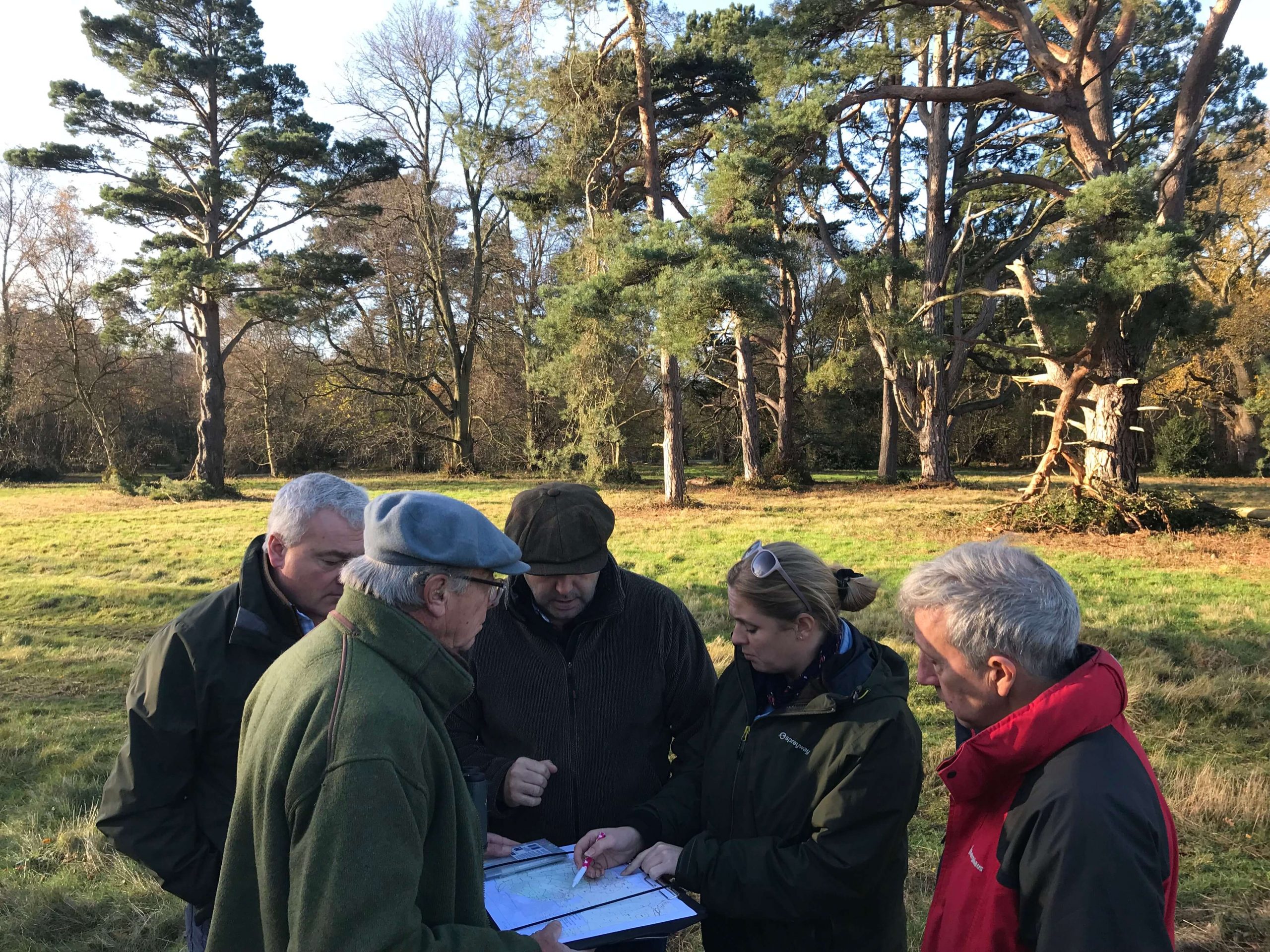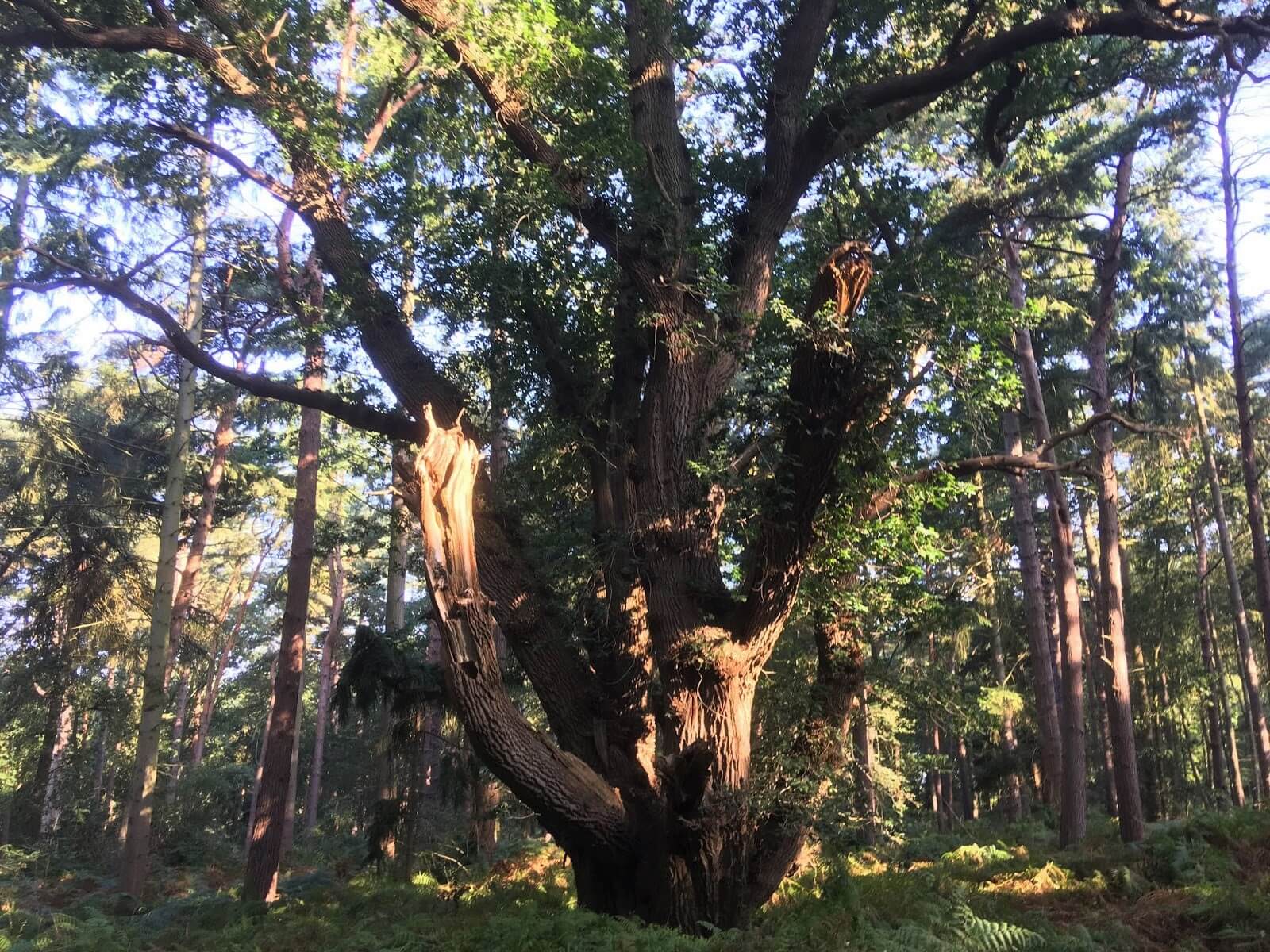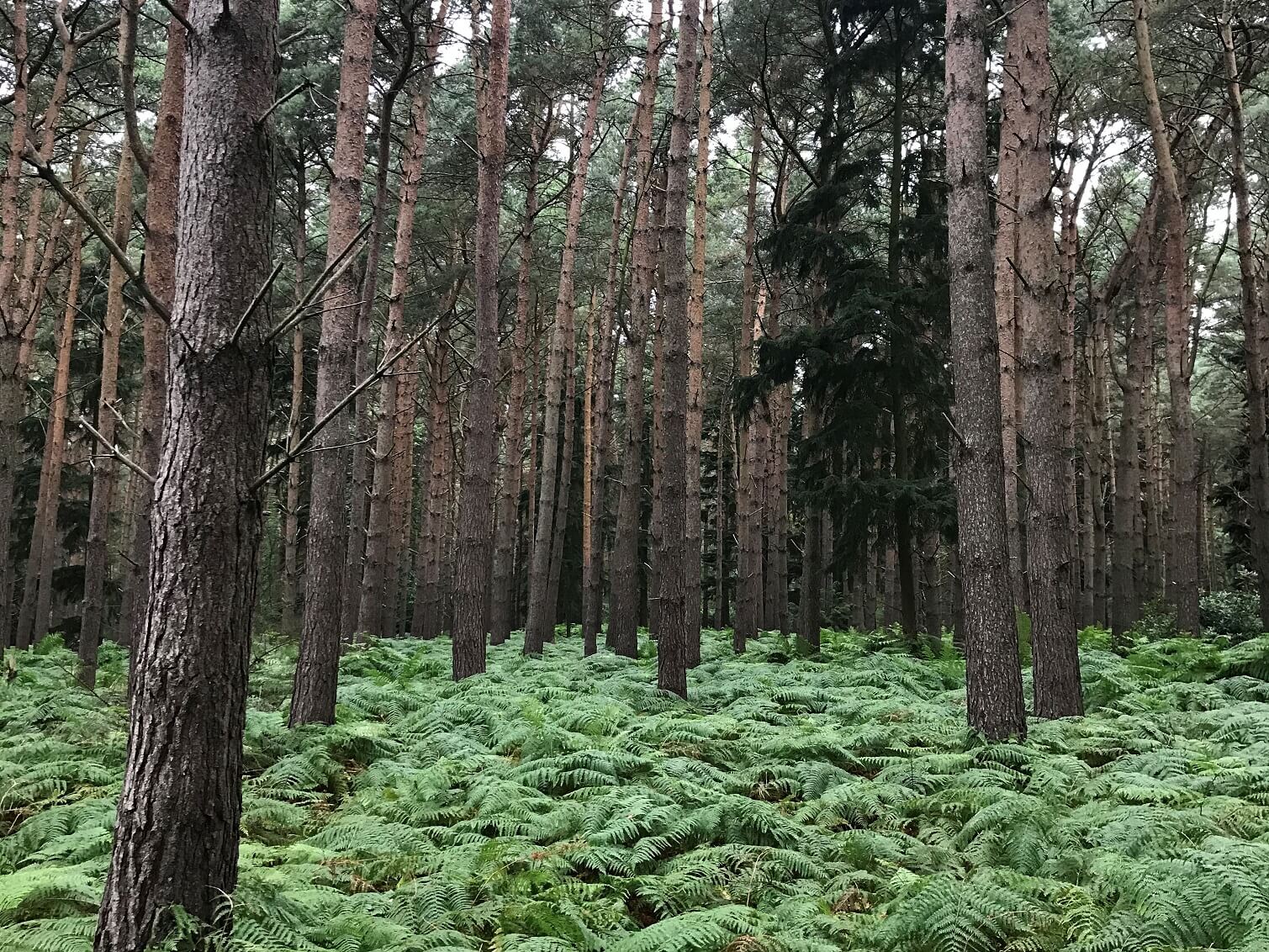


In the last few weeks, we have had meetings to design the initial programme of improvements that we are going to make to the 500-acre Ken Hill Wood, that sits in the centre of Wild Ken Hill. We need to make these improvements so that it can flourish once we step back and let it grow wild.
The Ken Hill Wood is beautiful and a public footpath from Snettisham is a favourite with local residents. The wood has a long history, with some parts classified as ‘Ancient Woodland’, and beautiful trees like this Pendunculate oak are hundreds of years old.

There are also, though, some more bland areas of the wood. These are typically newer, coniferous plantations, created in the last 50-100 years. They are characterised by a thick canopy that lets very little light through and a bland understorey with minimal wildlife. These areas are not bio-diverse, and certainly not wild!

Our plan for areas of poor biodiversity is to let the light come back through the canopy and help to regenerate the ground-level vegetation. Advice from Natural England, the Forestry Commission and other experts, suggested we will do this by selectively felling some trees, and removing as much rhododendron as we can.
In richer, more diverse areas of woodland there won’t be many changes, if any. And the veteran trees will be untouched of course. Overall, we are hoping that much of the woodland will become ‘wood pasture’ (more on this soon), with large grazing animals moving through the trees.
The discussions have been about agreeing exactly how the program will work. Particularly we need to get the balance right between interventions and protecting what wildlife we already have. For example, Ken Hill wood has the largest population of Barbastelle bats in Norfolk, probably of international significance, so we have been systematically marking their roosts, and making sure works do not disturb them or nearby areas.

We are hoping the works will start in earnest at the beginning of 2019, and we are very excited to see how nature will shape the wood in the future! Follow us on Instragram and subscribe to our newsletter to get more news from Wild Ken Hill.